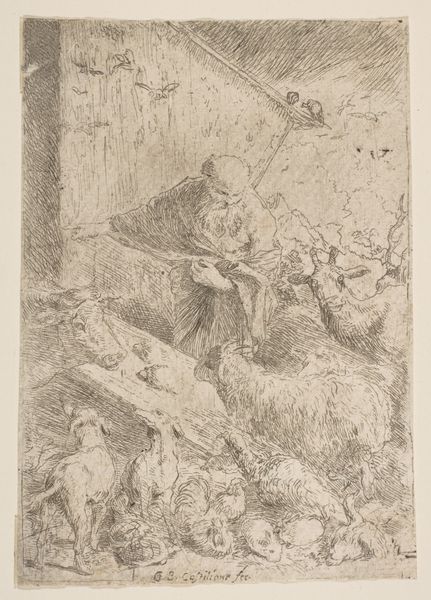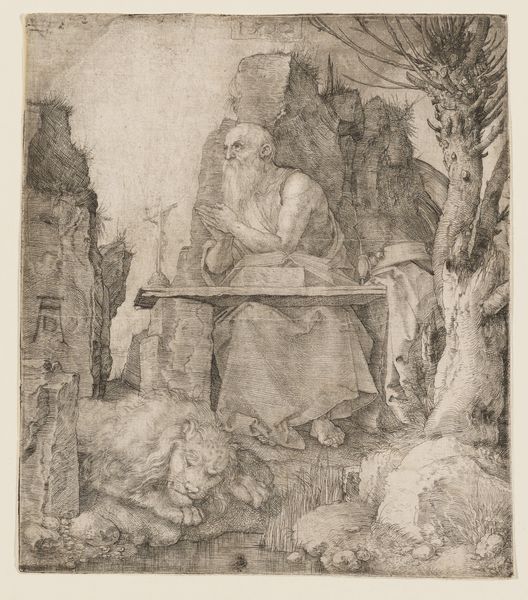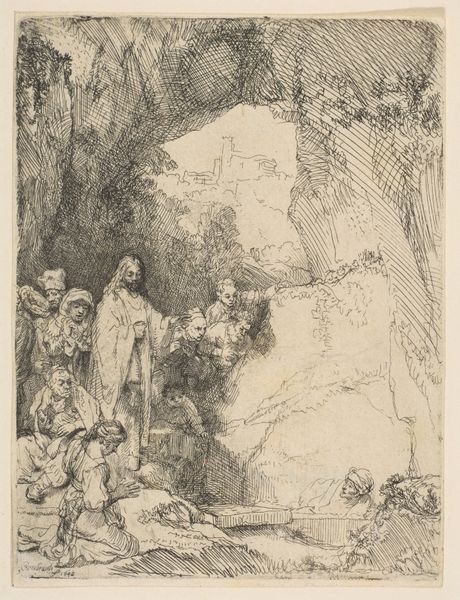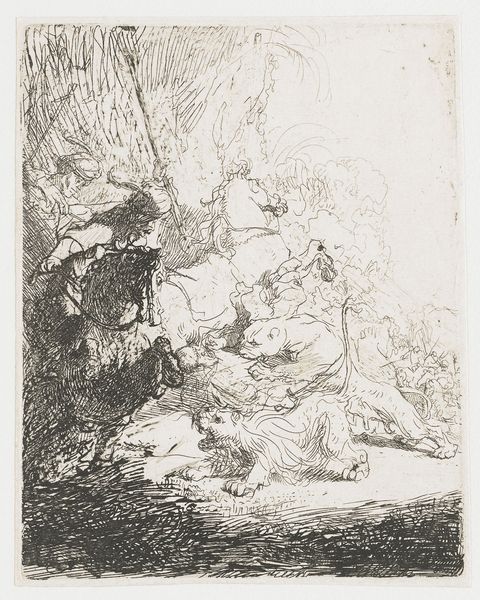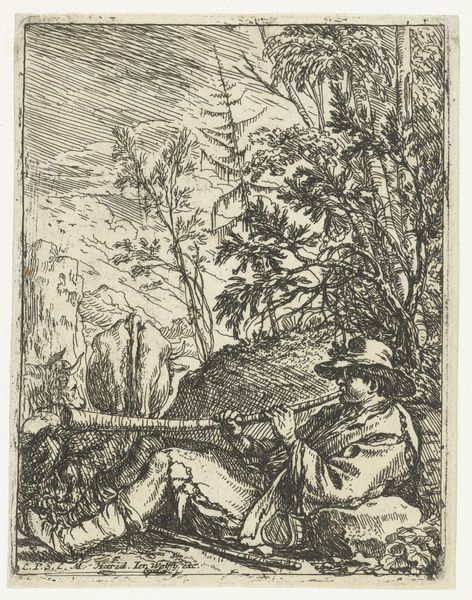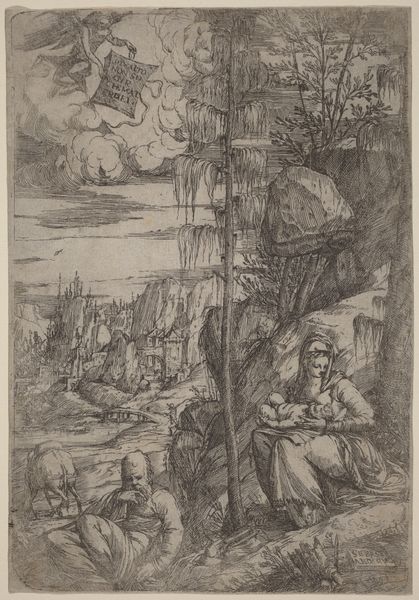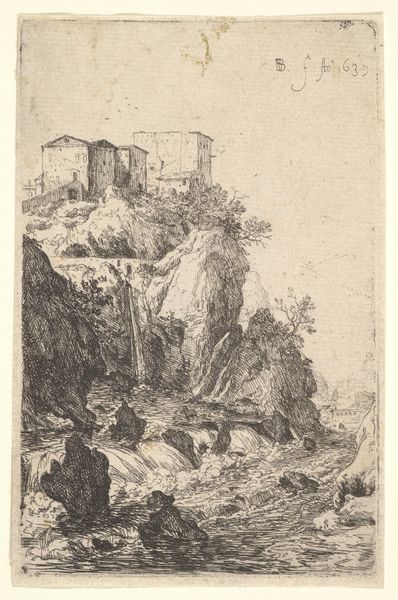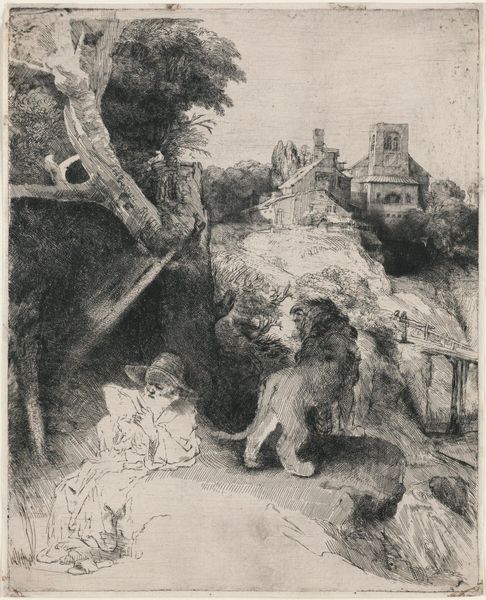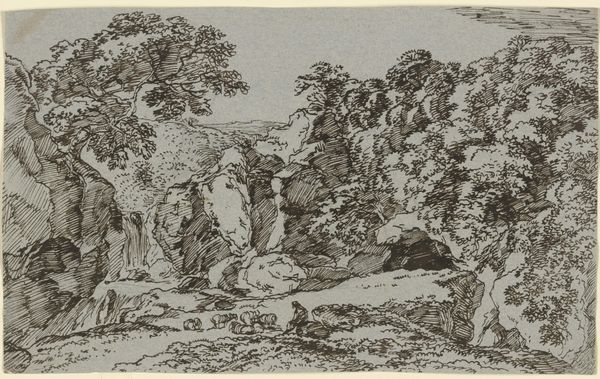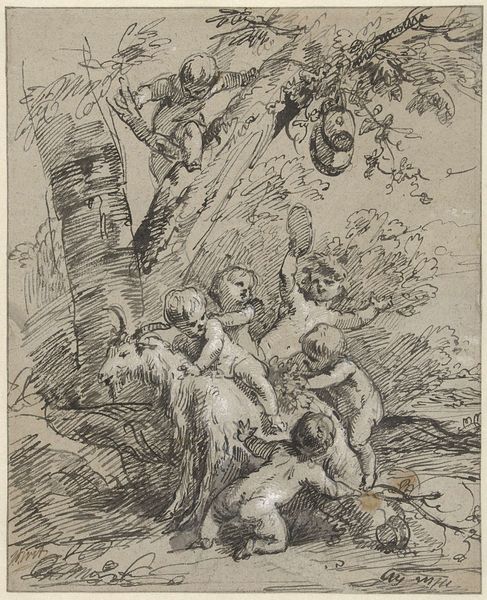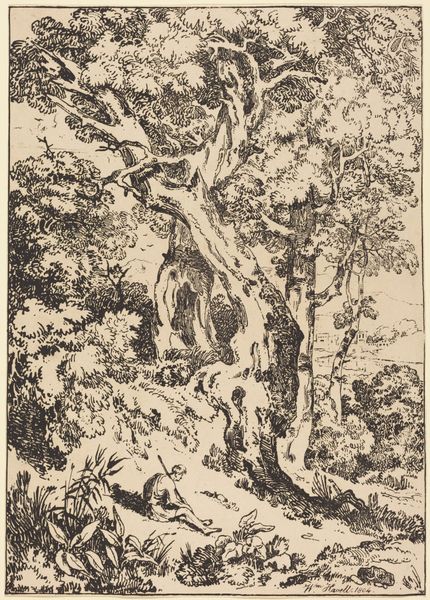
drawing, print, ink
#
drawing
#
ink drawing
#
allegory
#
narrative-art
#
baroque
# print
#
landscape
#
vanitas
#
ink
Dimensions: sheet (cut to platemark): 16.1 x 13.1 cm (6 5/16 x 5 3/16 in.)
Copyright: National Gallery of Art: CC0 1.0
Curator: Johann Heinrich Schönfeld's 1654 ink drawing, titled "Democritus Meditating", depicts a philosopher amongst the ruins. It strikes me first as profoundly melancholy, wouldn't you say? All those brittle lines composing a scene of such somber contemplation... Editor: Yes, there’s a clear sense of Baroque drama steeped in a *memento mori*. I'm immediately drawn to the symbolic weight. It is a reminder, isn’t it? Look at the skulls, the shattered vessels – quintessential vanitas imagery. Death is a very active and meaningful force in this image. Curator: Absolutely. The inscription "Vanitas et Pax" drives that home. It feels almost...performative. But then I consider the placement of the philosopher, Democritus. Editor: Tell me more about that… Curator: He is mediating next to the vanitas elements, set amongst ruins, as a sort of response or a comment. Almost like he has arranged these objects to serve as inspiration. It almost reframes vanitas from morbidness to... acceptance? Or a method? The loose sketchiness, for me, contributes to this as well – the looseness prevents the work from falling into dogma. Editor: That’s an interesting interpretation. I’ve been stuck on the figure in the tomb at the front - that grim skeleton points out the inherent theatricality. But I see what you mean – the active mind can create and accept meaning, even amongst these powerful symbols. Curator: Precisely! The light in the composition highlights a figure seeking, and thus finding some sort of peace among, if not despite, all this imagery and stage setting for what it means to be alive – that search makes this drawing less a gloomy memento mori and more of an inspiring commentary. Editor: What an enriching, multifaceted composition from Schönfeld, exploring philosophical contemplation alongside very bold, very dramatic symbols of mortality and the fleeting nature of earthly things. Curator: Indeed, the drawing presents vanitas, the transient nature of life, in such a way that transforms its conventional doom to wisdom and a practice to achieving some form of acceptance and internal balance. It is thought-provoking.
Comments
No comments
Be the first to comment and join the conversation on the ultimate creative platform.

